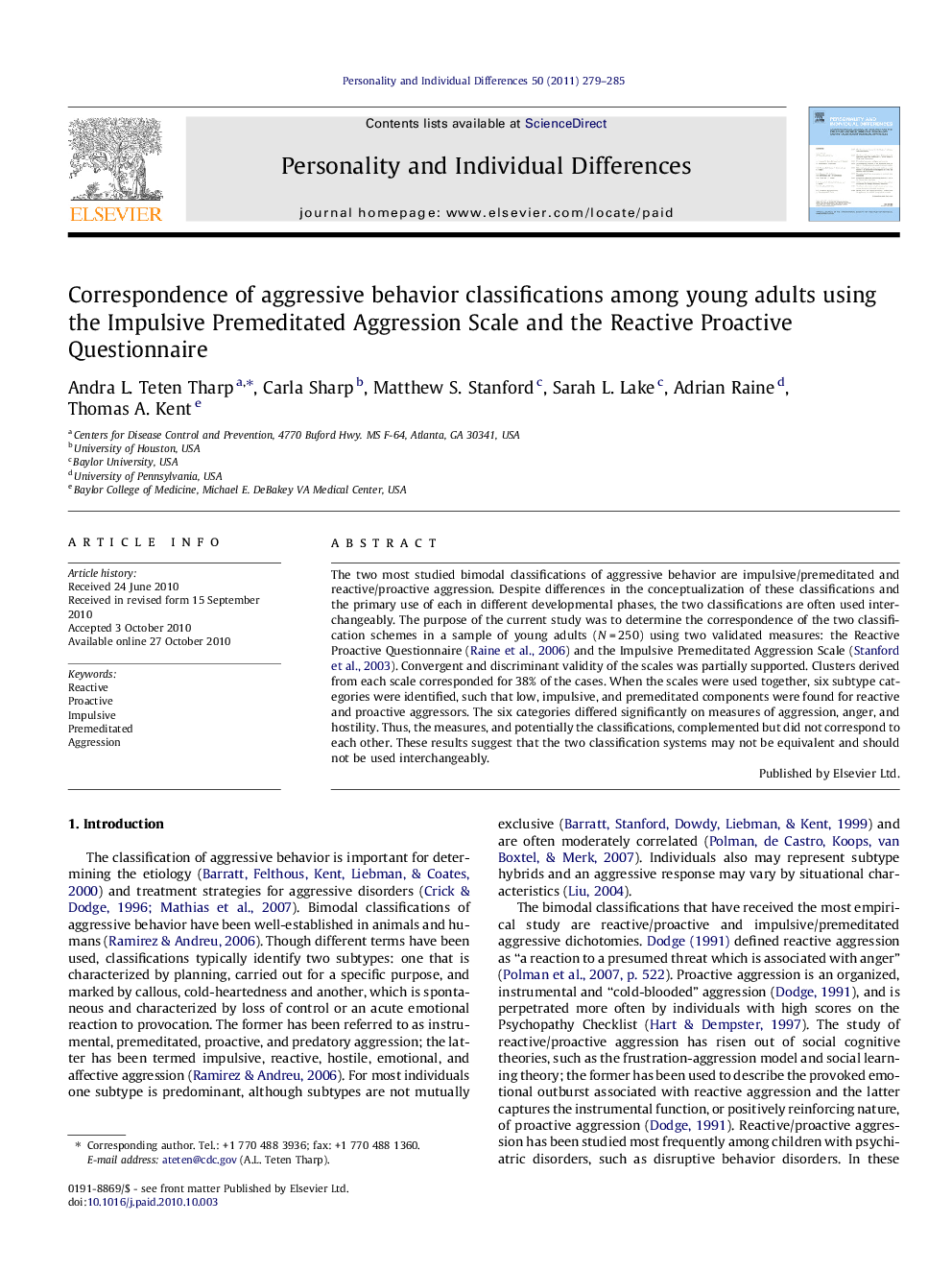| Article ID | Journal | Published Year | Pages | File Type |
|---|---|---|---|---|
| 891783 | Personality and Individual Differences | 2011 | 7 Pages |
The two most studied bimodal classifications of aggressive behavior are impulsive/premeditated and reactive/proactive aggression. Despite differences in the conceptualization of these classifications and the primary use of each in different developmental phases, the two classifications are often used interchangeably. The purpose of the current study was to determine the correspondence of the two classification schemes in a sample of young adults (N = 250) using two validated measures: the Reactive Proactive Questionnaire (Raine et al., 2006) and the Impulsive Premeditated Aggression Scale (Stanford et al., 2003). Convergent and discriminant validity of the scales was partially supported. Clusters derived from each scale corresponded for 38% of the cases. When the scales were used together, six subtype categories were identified, such that low, impulsive, and premeditated components were found for reactive and proactive aggressors. The six categories differed significantly on measures of aggression, anger, and hostility. Thus, the measures, and potentially the classifications, complemented but did not correspond to each other. These results suggest that the two classification systems may not be equivalent and should not be used interchangeably.
